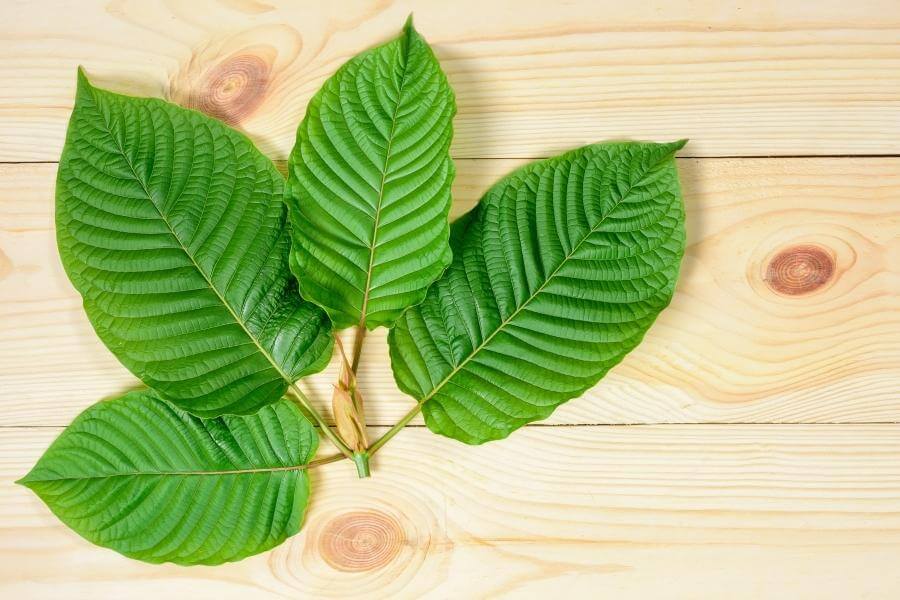

When it comes to finding an herbal supplement that has the same properties as kratom, there are several options available.
Each of these kratom alternatives has its own unique set of properties and drawbacks, so it’s important to do your research before deciding which one is right for you. Here are a few of the most popular alternatives to kratom:
Herbs Similar to Kratom
If you’re looking for natural herb alternatives to kratom, you’re at the right place! Here’re 10 great herbs similar to kratom substitutes.
1. Kava
Kratom is a member of the Rubiaceae family, which includes coffee and gardenia. The leaves of the kratom tree are typically dried and made into a powder, which can be taken orally or brewed into tea.
Kava, on the other hand, belongs to the Piperaceae family, which includes black pepper and chili peppers. The root of the kava plant is typically ground into a powder and mixed with water to make a drink.
Both kratom and kava produce similar effects. However, kava is also more likely to cause adverse effects, such as liver damage, than kratom. Because of this, kava is not recommended for people with liver problems. Yet it is a great alternative to kratom.
2. Mitragyna Javanica
This plant is native to Southeast Asia and is closely related to kratom. It has been used for centuries. Kratom is much stronger than mitragyna javanica, meaning that it will never offer similar effects.
However, if you are looking for an experience like kratom, then expect a larger dose and quicker depletion of your supply because mitragyna javanica lacks any significant amount of alkaloid profiles compared to one another.
3. Mitragyna Hirsuta
Unlike kratom, it does not contain mitragynine or 7-hydroxymitragynine.
Mitragyna hirsuta is a relative of kratom with many similar features but is less potent. It can be helpful for people who are unable or unwilling to use kratom because it offers most of these qualities as well!
4. Mitracarpus Scaber
This plant is native to Madagascar and is closely related to kratom. Unlike kratom, it does not contain mitragynine or 7-hydroxymitragynine.
5. Turmeric
Turmeric is a spice that is derived from the root of the Curcuma longa plant. It has been used in Indian cuisine for centuries and is a key ingredient in many curry powders. Turmeric has also been traditionally used for medicinal purposes.
So, while kratom and turmeric do have some similarities, there are also some significant differences between the two substances. Kratom is more commonly used for its wonderful effects, while turmeric is more commonly used for its properties. When choosing between the two, it is important to consider what your specific needs are.
6. CBD
You should definitely consider it as an alternative to kratom. Yet, do not forget that kratom is a much safer option!
7. Zingiber Officinale
This plant is native to China and is closely related to kratom. It has been used in traditional medicine. Unlike kratom, it does not contain mitragynine or 7-hydroxymitragynine.
8. Blue Lotus
Kratom boasts an impressive array of usages, depending on the dose.
In addition to this variety in properties from different strains and colors within its vast family tree, one can also find unique alkaloid profiles that lead them towards their own personalized treatment plan for their concerns or just personal preference!
Kratoms work differently but all have been shown to be helpful when taken regularly so self-experimentation should be done with care since some people may not tolerate certain chemicals well.
So don't shy away from trying out different methods until finding something that works best - just like we do when coming up against other challenges during our lives!
9. Valeriana officinalis
This plant is native to Europe and it is another alternative to kratom. Kratom and valerian root are two different plants with unique properties.
Valepotriates, monoterpenes and lignans are just some examples of the many chemicals found in Valerian. It's important to know how each herb affects your body before making a purchase, so always check with the physician ahead of time! There isn't any research linking them together aside from anecdotal reports that say Valeriana can heighten the alkaloids within Kratom.
10. Phenibut
Kratom is a healthier alternative to Phenibut because it does not have as many unpleasant side effects and you can take it more frequently with no risk of developing an addiction.
Additionally, kratoms' tolerance build-up process happens slower making the natural product better in theory for long-term use by removing any negative aspects found within other substitutes like this synthetic one.
***
These are just a few of the many kratom alternatives that are available. However, none of them is as powerful as kratom.
Be sure to do your research before deciding which kratom substitutes are right for you. There is no one-size-fits-all solution when it comes to finding an herbal supplement, so it’s important to find one that meets your specific needs.
While we believe in the features of other natural herbs and supplements, kratom is still the most effective solution. If you are looking for a natural supplement then give our cutting-edge kratom products a try today! You won’t be disappointed.


